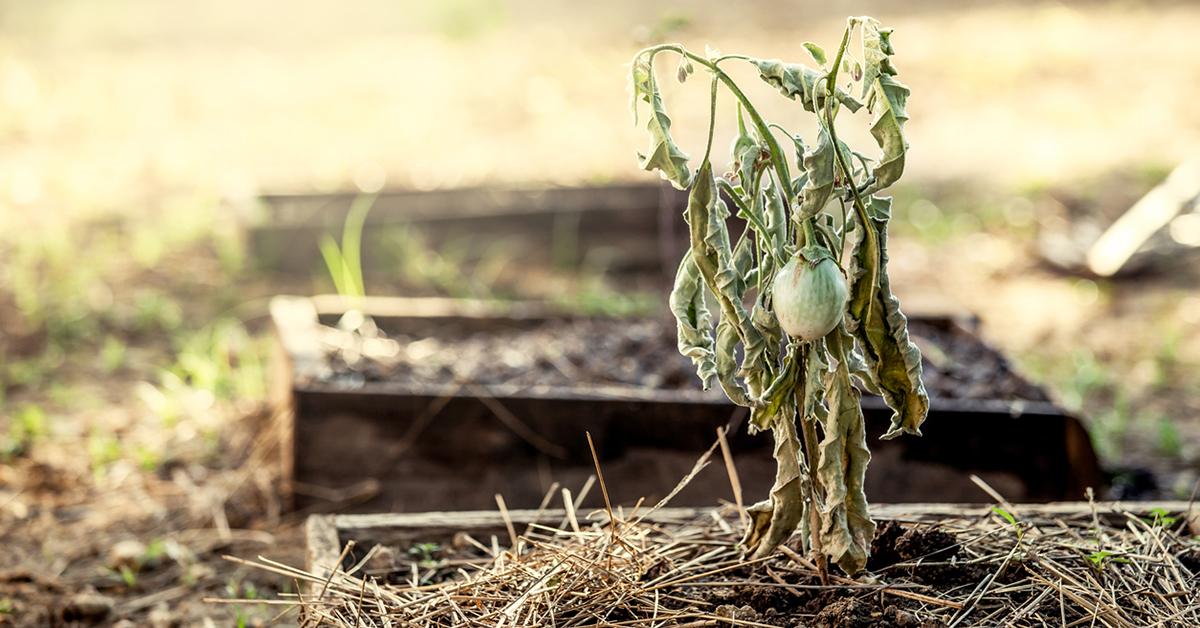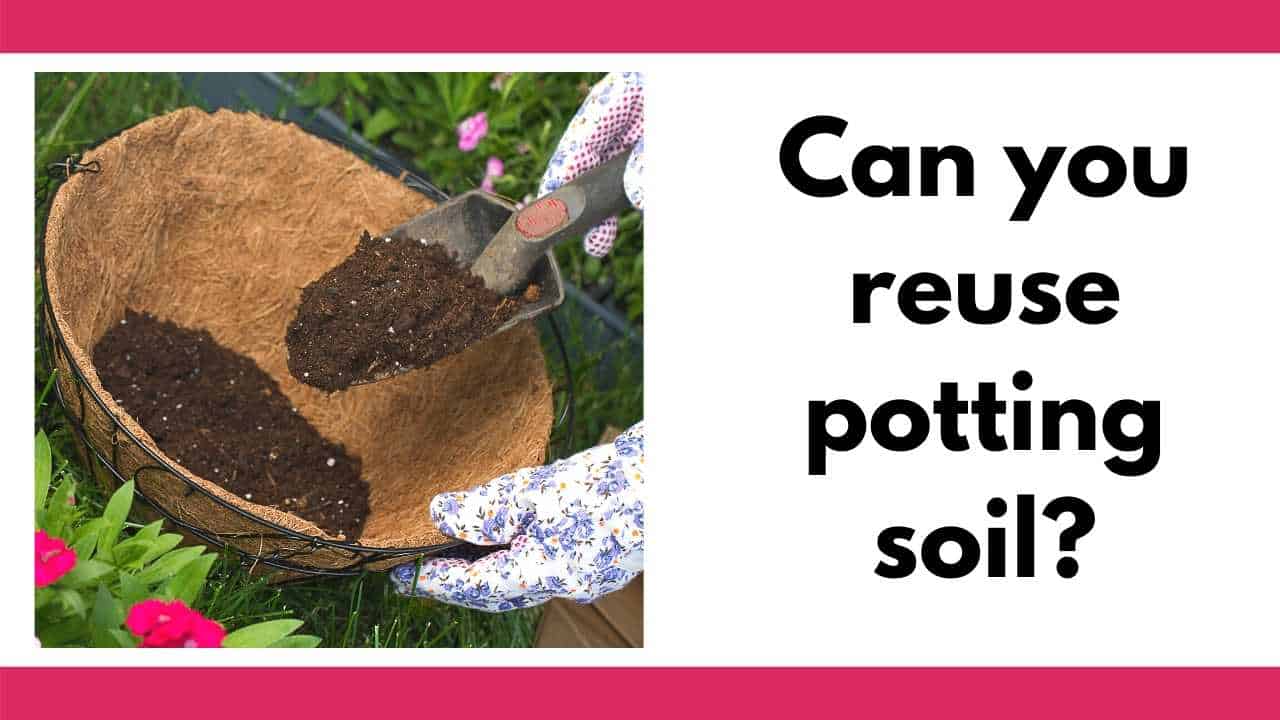When Disaster Strikes: What to Do with Dead Plants
Dealing with dead plants is an inevitable part of gardening. Whether it’s due to disease, pests, or simply old age, the demise of a beloved plant can be disheartening. However, the real question is: what to do with the remaining soil? Can you reuse soil from a dead plant, or is it better to start fresh?
The importance of soil conservation and sustainability cannot be overstated. Soil is a precious resource that takes centuries to form, yet it can be depleted in a matter of years if not managed properly. By reusing soil from a dead plant, gardeners can reduce waste, conserve natural resources, and promote a healthier environment.
But before diving into the world of soil reuse, it’s essential to understand the challenges and benefits involved. Soil from a dead plant may be contaminated with diseases, pests, or excess nutrients, making it unsuitable for reuse without proper treatment. On the other hand, reusing soil can be a cost-effective and environmentally friendly way to revitalize your garden.
Can You Breathe New Life into Old Soil?
The possibility of reusing soil from a dead plant is an attractive option for gardeners looking to reduce waste and conserve natural resources. Can you reuse soil from a dead plant? The answer is yes, but it requires careful consideration of the benefits and challenges involved.
One of the primary advantages of reusing soil is the reduction of waste. By reusing soil, gardeners can minimize the amount of waste sent to landfills, which in turn reduces greenhouse gas emissions and supports a more sustainable environment. Additionally, reusing soil conserves natural resources, as it eliminates the need for new soil production.
However, reusing soil from a dead plant also presents potential drawbacks and challenges. Soil from a dead plant may be contaminated with diseases, pests, or excess nutrients, making it unsuitable for reuse without proper treatment. Furthermore, the soil’s pH levels, nutrient content, and structure may be compromised, requiring additional amendments and adjustments.
Despite these challenges, reusing soil from a dead plant can be a cost-effective and environmentally friendly way to revitalize your garden. By understanding the benefits and challenges involved, gardeners can make informed decisions about soil reuse and take the necessary steps to create a thriving ecosystem.
How to Identify Soil Quality: A Step-by-Step Guide
Before reusing soil from a dead plant, it’s essential to assess its quality to determine if it’s suitable for reuse. Can you reuse soil from a dead plant without proper evaluation? The answer is no. Soil quality evaluation is a critical step in the soil reuse process, as it helps identify potential issues and determines the necessary amendments and treatments.
Here’s a step-by-step guide to help you evaluate the quality of your soil:
pH Levels: Test the soil’s pH levels using a pH meter or pH paper. Most plants thrive in a slightly acidic to neutral soil pH, ranging from 6.0 to 7.0. If the pH levels are too high or too low, it may be necessary to add amendments to adjust the pH.
Nutrient Content: Analyze the soil’s nutrient content, including nitrogen, phosphorus, and potassium. A soil test kit or laboratory analysis can provide detailed information on the nutrient levels. Based on the results, you may need to add fertilizers or organic matter to replenish the nutrients.
Contamination: Inspect the soil for signs of contamination, such as pests, diseases, or excess chemicals. If the soil is contaminated, it may be necessary to sterilize it or add beneficial microorganisms to combat the issues.
Structure and Texture: Evaluate the soil’s structure and texture, including its water-holding capacity, aeration, and drainage. If the soil is too dense or lacks proper drainage, it may be necessary to add organic matter or perlite to improve its structure.
By following these steps, you can determine the quality of your soil and make informed decisions about its reuse. Remember, can you reuse soil from a dead plant without proper evaluation? The answer is no. Soil quality evaluation is a critical step in the soil reuse process, and it’s essential to get it right to ensure a thriving ecosystem.
The Role of Microorganisms in Soil Health
Microorganisms play a vital role in soil health, and their importance cannot be overstated when it comes to reusing soil from a dead plant. These tiny organisms are responsible for decomposing organic matter, fighting plant diseases, and promoting nutrient cycling, making them essential for a thriving ecosystem.
Decomposition is a critical process in soil health, as it breaks down organic matter into nutrient-rich compounds that plants can absorb. Microorganisms such as bacteria and fungi are responsible for this process, and their presence is essential for maintaining soil fertility. When reusing soil from a dead plant, it’s essential to ensure that these microorganisms are present and thriving.
Microorganisms also play a crucial role in fighting plant diseases. Beneficial microorganisms can outcompete pathogens, reducing the risk of disease and promoting a healthy plant growth. This is especially important when reusing soil from a dead plant, as the risk of disease transmission is higher.
Nutrient cycling is another critical process that microorganisms facilitate. They convert nutrients into forms that plants can absorb, ensuring that the soil remains fertile and productive. This process is essential for maintaining soil health and promoting a thriving ecosystem.
When reusing soil from a dead plant, it’s essential to consider the role of microorganisms in soil health. By promoting a healthy microbial population, gardeners can create a thriving ecosystem that supports plant growth and reduces the risk of disease. Can you reuse soil from a dead plant without considering the role of microorganisms? The answer is no. Microorganisms are essential for maintaining soil health, and their importance cannot be overstated.
Revitalizing Old Soil: Tips and Tricks
Revitalizing old soil from a dead plant requires a combination of techniques that address its physical, chemical, and biological properties. By implementing these tips and tricks, gardeners can create a thriving ecosystem that supports plant growth and reduces the risk of disease.
Aeration: One of the most critical steps in revitalizing old soil is aeration. This involves loosening the soil to improve its structure and promote healthy drainage. Aeration can be achieved through techniques such as tilling, digging, or using a fork to loosen the soil.
Adding Organic Matter: Adding organic matter such as compost, manure, or peat moss can help improve the soil’s nutrient content and structure. This is especially important when reusing soil from a dead plant, as it may be depleted of essential nutrients.
Beneficial Microorganisms: Beneficial microorganisms play a crucial role in soil health, and their presence is essential for a thriving ecosystem. Gardeners can promote the growth of beneficial microorganisms by adding organic matter, reducing tillage, and using cover crops.
Soil Amendments: Soil amendments such as fertilizers, lime, or sulfur can help address pH imbalances and nutrient deficiencies. However, it’s essential to use these amendments judiciously, as overuse can harm the soil and the environment.
By implementing these tips and tricks, gardeners can revitalize old soil from a dead plant and create a thriving ecosystem. Can you reuse soil from a dead plant without revitalizing it? The answer is no. Revitalizing old soil is essential for promoting soil health and fertility, and it’s a critical step in adopting sustainable gardening practices.
Common Mistakes to Avoid When Reusing Soil
When reusing soil from a dead plant, it’s essential to avoid common mistakes that can compromise soil health and fertility. By being aware of these mistakes, gardeners can take steps to mitigate risks and ensure a thriving ecosystem.
Neglecting to Sterilize the Soil: Failing to sterilize the soil can lead to the transmission of diseases and pests from the dead plant to new plants. Sterilization can be achieved through techniques such as solarization, pasteurization, or chemical treatment.
Ignoring pH Imbalances: pH imbalances can have a significant impact on soil health and fertility. Gardeners should test the soil pH and take corrective action to adjust it to the optimal range for the new plants.
Failing to Remove Contaminants: Contaminants such as heavy metals, pesticides, and herbicides can be present in the soil and pose a risk to new plants. Gardeners should test the soil for contaminants and take steps to remove them before reusing the soil.
Not Assessing Soil Quality: Failing to assess the quality of the soil can lead to poor soil health and fertility. Gardeners should conduct regular soil tests to determine the soil’s nutrient content, pH levels, and contamination levels.
By avoiding these common mistakes, gardeners can ensure that the reused soil is healthy, fertile, and free of contaminants. Can you reuse soil from a dead plant without taking these precautions? The answer is no. Taking the necessary precautions is essential for promoting soil health and fertility, and for adopting sustainable gardening practices.
Creating a Soil Reuse Plan: A Long-Term Strategy
Developing a long-term strategy for soil reuse is crucial for maintaining soil health and fertility. By planning ahead, gardeners can ensure that their soil remains productive and sustainable over time.
Crop Rotation: Crop rotation is a key component of a soil reuse plan. By rotating crops, gardeners can break disease and pest cycles, improve soil structure, and promote nutrient cycling. A well-planned crop rotation strategy can help maintain soil fertility and reduce the need for synthetic fertilizers.
Soil Testing: Regular soil testing is essential for monitoring soil health and fertility. By testing the soil regularly, gardeners can identify nutrient deficiencies, pH imbalances, and contamination issues. This information can be used to develop targeted strategies for improving soil health and fertility.
Continuous Monitoring: Continuous monitoring is critical for ensuring that the soil remains healthy and fertile over time. Gardeners should regularly inspect the soil for signs of disease, pests, and nutrient deficiencies. By catching problems early, gardeners can take corrective action to prevent soil degradation.
Soil Reuse Goals: Setting soil reuse goals is an important part of developing a long-term strategy. Gardeners should identify specific objectives, such as improving soil fertility, reducing waste, or promoting biodiversity. By setting clear goals, gardeners can focus their efforts and measure progress over time.
By developing a long-term strategy for soil reuse, gardeners can ensure that their soil remains healthy, fertile, and productive over time. Can you reuse soil from a dead plant without a long-term strategy? While it’s possible, a long-term strategy is essential for maintaining soil health and fertility, and for adopting sustainable gardening practices.
Conclusion: Giving Old Soil a New Lease on Life
In conclusion, reusing soil from a dead plant is a viable option for gardeners looking to reduce waste and conserve natural resources. By following the guidelines outlined in this article, gardeners can breathe new life into old soil, creating a thriving ecosystem that promotes healthy plant growth.
Can you reuse soil from a dead plant? Absolutely. With the right techniques and strategies, old soil can be revitalized, and its fertility and health restored. By adopting sustainable gardening practices, gardeners can play a critical role in promoting a healthier environment and reducing their carbon footprint.
Remember, soil reuse is not just about reducing waste; it’s about creating a more sustainable future for generations to come. By taking the time to assess soil quality, revitalize old soil, and develop a long-term strategy for soil reuse, gardeners can make a positive impact on the environment and enjoy a bountiful harvest for years to come.
So, the next time you’re faced with a dead plant, don’t throw away the soil. Instead, consider giving it a new lease on life. With a little creativity and effort, you can turn old soil into a thriving ecosystem that will support healthy plant growth and promote a more sustainable future.





